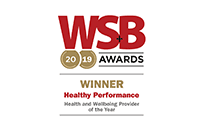
Hypertension (High blood pressure) is the leading cause of stroke, and one of the main risk factors for heart attack, kidney failure, and heart disease. It is defined as having a consistent blood pressure of 140/90 mm Hg or greater.
The positive relationship between exercise and blood pressure is well established. Regular moderate intensity exercise has been shown to reduce the risk of developing hypertension by 19 to 30%; and other studies show regular moderate-to-high intensity aerobic exercise can lower systolic and diastolic blood pressure by an average of 11 and 5 mm Hg (up to 12% reduction), which for someone with a borderline/high blood pressure of 135-140/85-90 mm Hg is a massive reduction in their overall risk, and brings them back closer to an ideal reading of 120/80 mm Hg.
Regular exercise recommendations relate to accumulating at least 150mins of moderate intensity (up to 70% of your maximum heart rate), or 75mins of vigorous/high intensity (>75% of your maximum heart rate) exercise throughout the week.
But even a single 60-minute bout of aerobic exercise can reduce blood pressure by 7%. So if you can maintain a regular exercise routine, you can see a gradual stepping-down effect with your blood pressure over the course of a few weeks. This can occur when, following a bout of exercise, your blood pressure falls below where it started, and then slowly returns to its original place over the course of a few hours.
One of the main benefits relating to how exercise reduces blood pressure, is that it improves the elasticity of blood vessels, meaning they are able to stretch and dilate more effectively, resulting in lower pressure as blood flows through.
Other well-known benefits include weight loss and management, reducing stress levels, and improving cholesterol levels.
The greatest benefit in reducing your risk or progression of cardiovascular disease, including high blood pressure risks, is when physical activity intensity levels are performed at a rate that improve your aerobic fitness, which equates to at least 60% of your heart rate maximum.
For sedentary people, this intensity would equate to a brisk walking speed, or an easy, steady cycling pace.
A quick and easy way to measure your maximum heart rate is 220-age.
For example, for a 45 year old person:
Maximum Heart Rate = 220- age (45)
= 175 beats per minute x 0.6 (60%)
= 105 beats per minute.
For beginners, it is best to start at a low intensity (50-60% heart rate maximum) and gradually build yourself up in terms of minutes (volume) of exercise, and then build your intensity once you’ve achieved your optimal volume to gain the greatest exercise benefits. Moderate intensity exercise relates to <70% maximum heart rate, and vigorous intensity classed at >75% maximum heart rate.
For example, for a 45 year old to gain the optimal benefits of moderate intensity physical activity (between 60-70% heart rate maximum), you need to accumulate 150 minutes of activity whilst keeping your heart rate between 105-123 beats per minute.
So the main message is to add some additional activity to your day-to-day tasks and lifestyle. Even if just for 10 minutes to begin with and build from there. Schedule-in some weekly walks after work or during your lunch breaks, take up a new dance class, head to the park on the weekend – do whatever you can to help reduce the risks of high blood pressure through keeping an active lifestyle.
If you’d like to raise awareness of the importance of an active lifestyle in your organisation, discover how we can assist you with our corporate health and wellbeing programmes. Contact us to find out more, we’d be delighted to help you.











